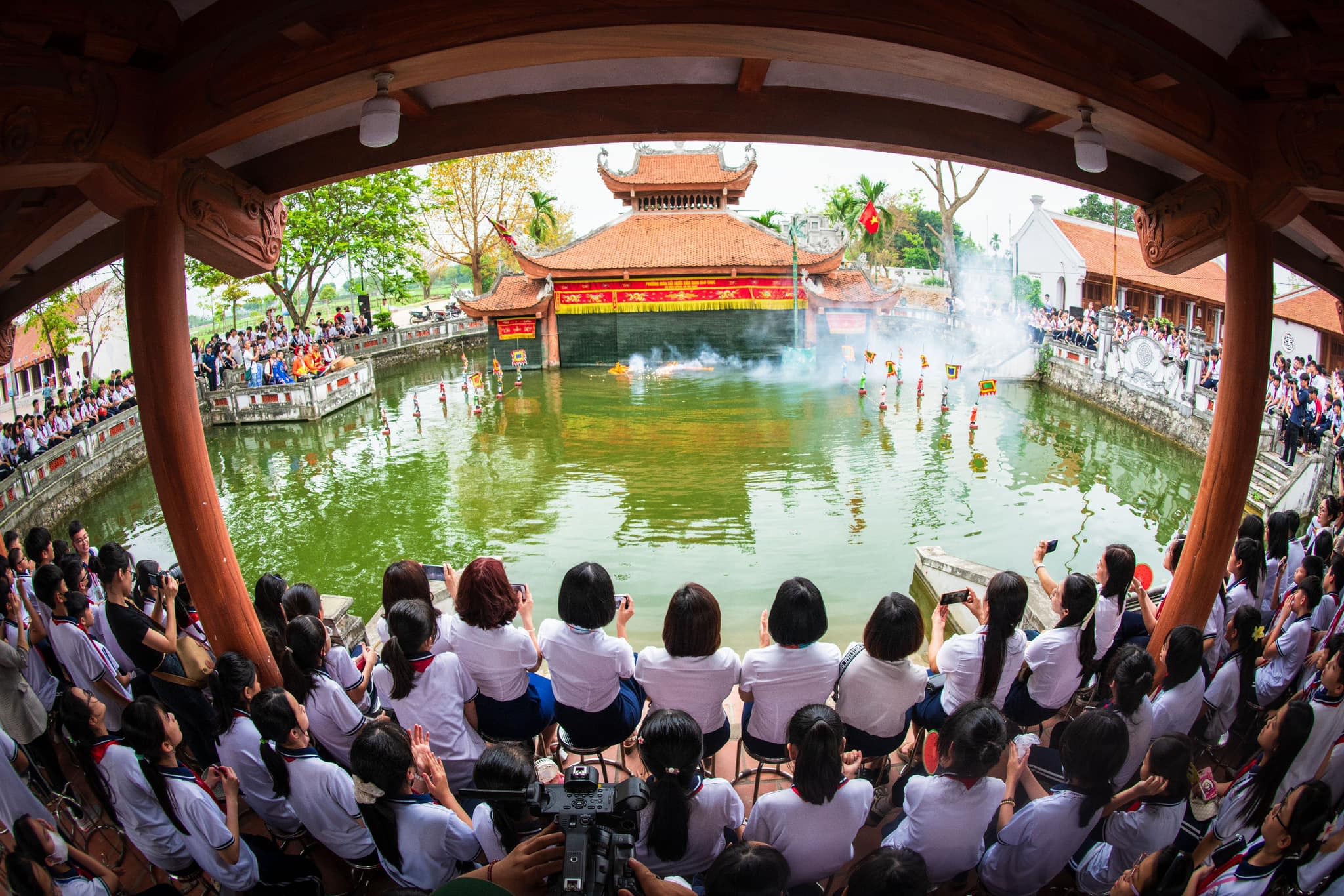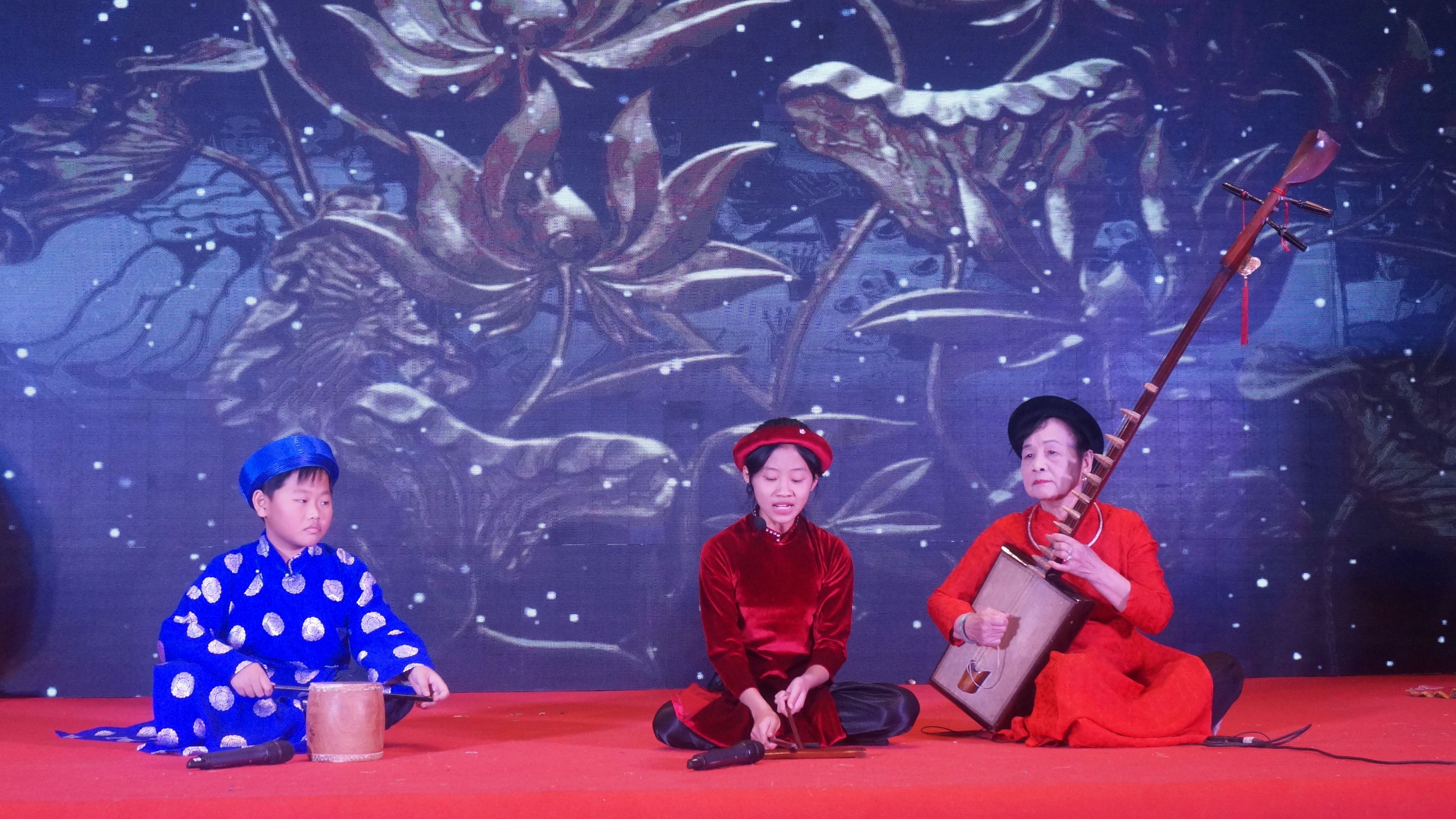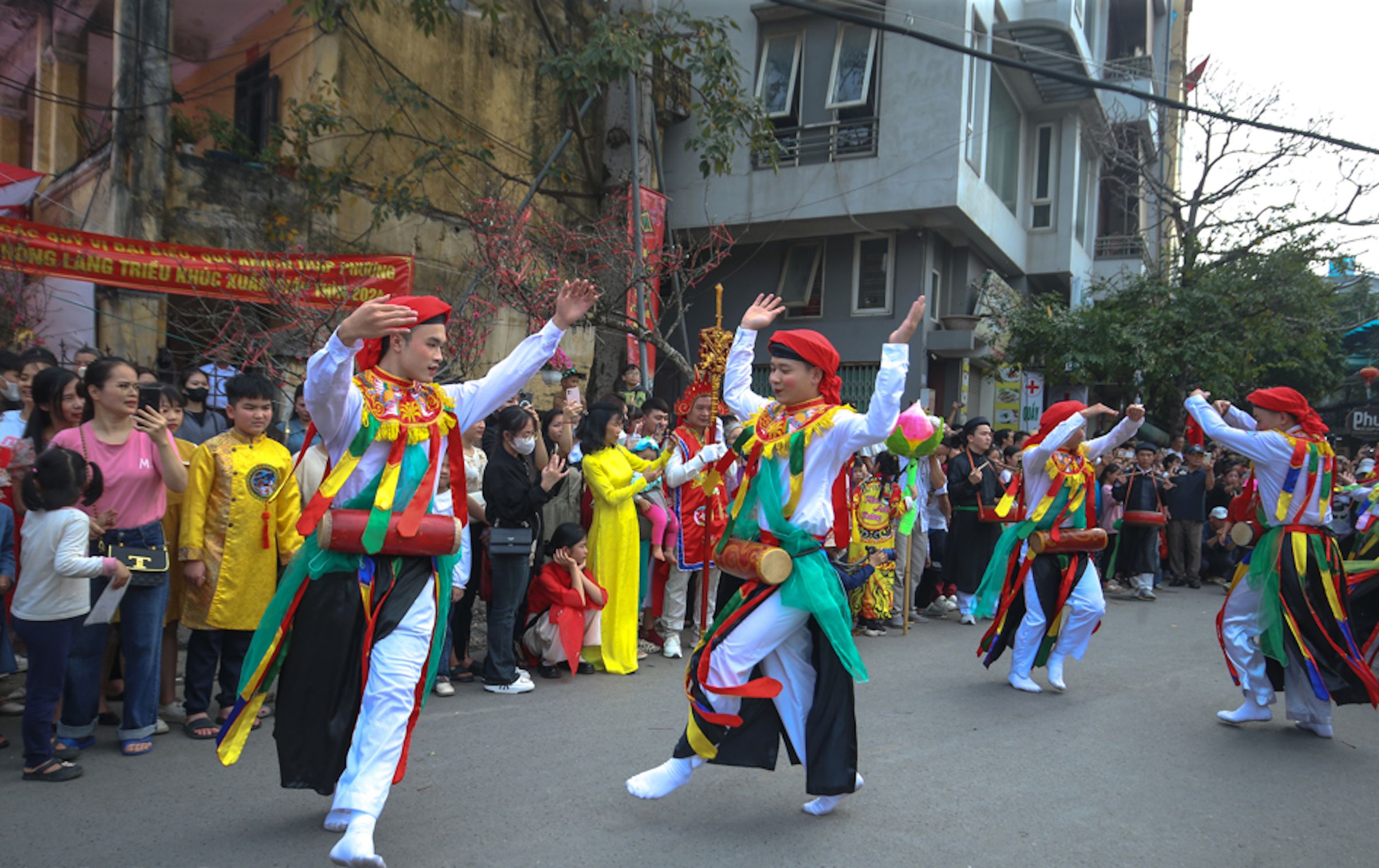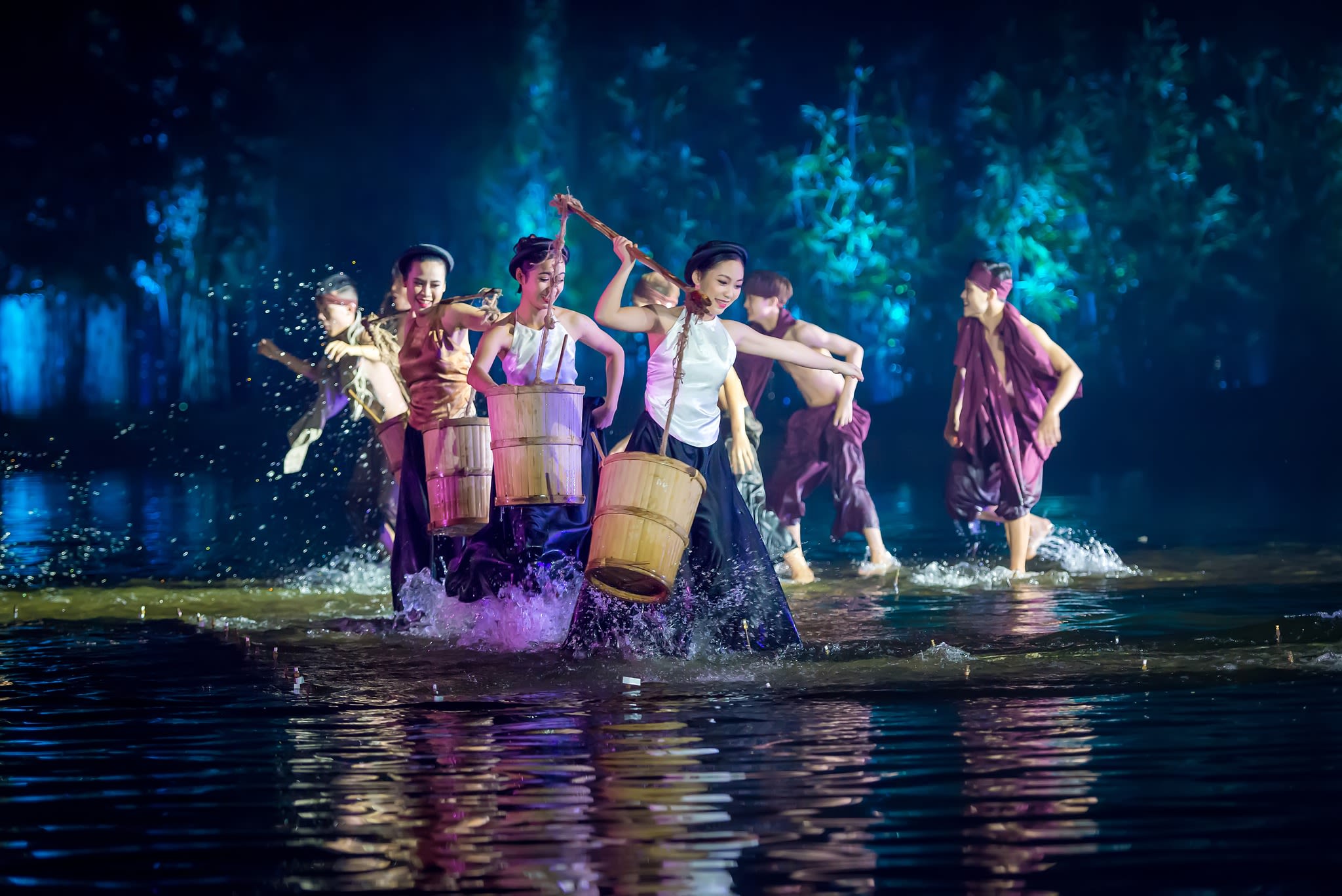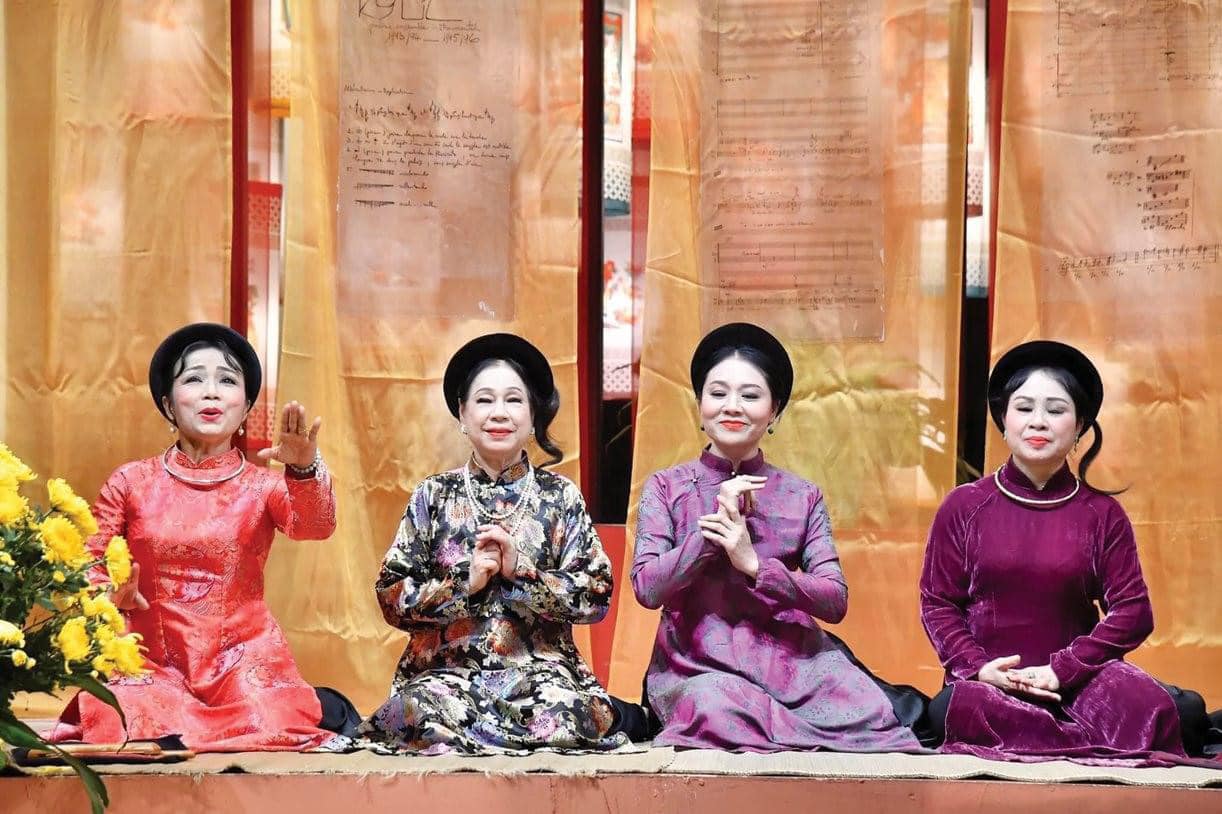NEW VITALITY
OF FOLK PERFORMING ARTS
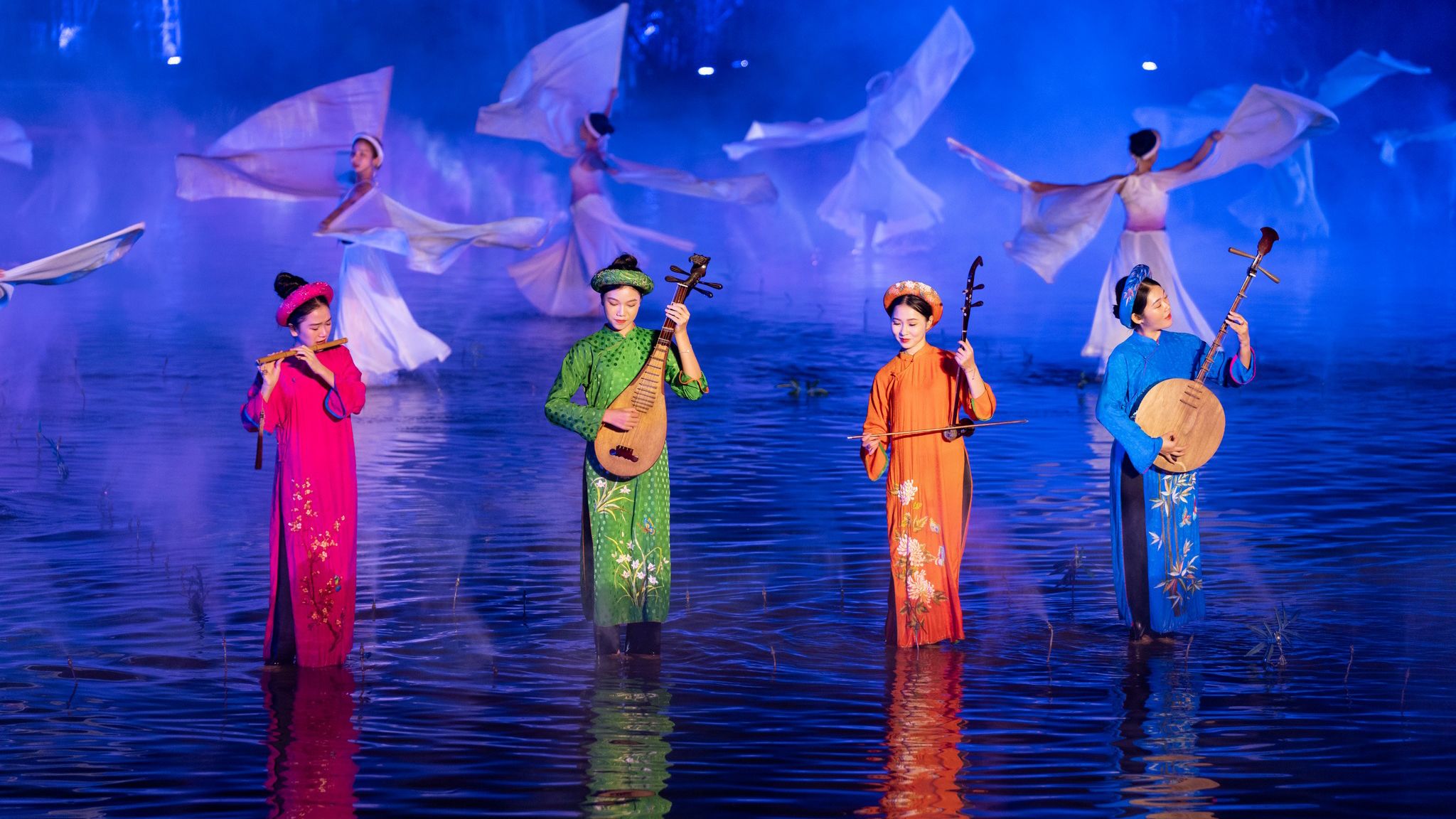
Hanoi has a rich repertoire of folk performing arts, from water puppetry to ‘Cheo’ (Vietnamese traditional opera), ‘trong quan’ folk singing and drum dance, and Ai Lao singing and dancing. There was a period when many folk performing arts were at risk of disappearing. However, thanks to investment and support from authorities at all levels and the cultural sector, folk art forms have found new vitality. Many localities have utilised folk art forms to develop the cultural industry.
From the story of a puppetry village
In the past, the artisans in Dao Thuc Water Puppetry Village in Thuy Lam Commune, Dong Anh District, Hanoi, only performed a few times a year, mostly during festivals and cultural exchanges. But now, it has become their daily job.
The artists now have to schedule their water puppet shows in advance to arrange alternative staff for those who cannot attend the shows. Sometimes, there are also unexpected shows. This has made Dao Thuc water puppetry artisans more professional in welcoming tourists.
Dao Thuc Water Puppet Theatre always attracts a large number of tourists. (Photo: The Nghi)
Dao Thuc Water Puppet Theatre always attracts a large number of tourists. (Photo: The Nghi)
In addition to enjoying water puppetry shows, tourists to Dao Thuc Village are also served lunch and visit historical sites to explore countryside landscapes. They can also experience making puppets and buy puppets as souvenirs.
Dao Thuc villagers have gradually become professional in welcoming tourists.
Water puppetry has been practised in Dao Thuc Village for about 300 years. Over the years, the puppetry village has also gone through ups and downs, especially during the war, when performances were interrupted, puppets were lost, and many artists died. Since the early 2000s, the practice of water puppetry in Dao Thuc village has gradually been revitalised, especially since a water pavilion was built to host water puppetry shows.
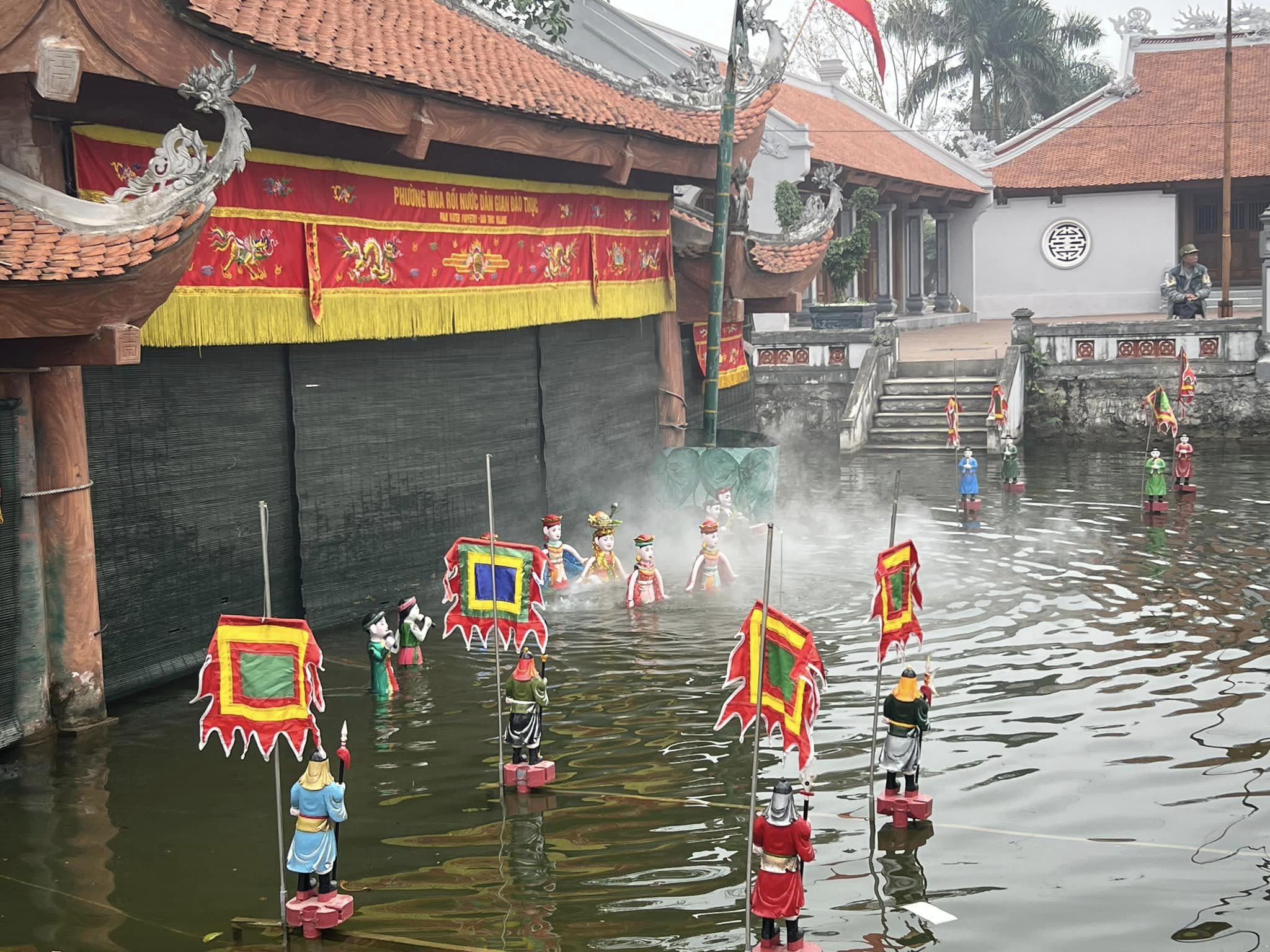
About 15 years ago, a team of young people thought of renovating the operation of the puppetry guild. If there were only a few performances a year, the artisans would not remain committed, while the young generation would not want to pursue the profession. Those young people set up a website to promote puppetry online. They also provided feedback for the elders to accept the changes, especially the restructuring of performances to serve tourism and visiting travel agencies to offer their products. Many enterprises were startled, they did not think that a rural puppetry village could engage in tourism.
“Changing the way of thinking and doing things is a long process.”
The first delegations of visitors arrived to the astonishment of the villagers and the puppetry artisans themselves. But then they grew accustomed to welcoming tourists. The organisation of tours has become smoother and more professional. Besides a guide in Vietnamese, the puppetry village also produced an English audio guide to help foreign visitors better understand the art of the Vietnamese village.
Those young people are now in their 40s and 50s. Among them is Nguyen The Nghi, who was once trusted as the elected head of the guild but has now returned to his familiar job of business management.
He shared that “Changing the way of thinking and doing things is a long process. When the puppetry was doing well, it received more attention from the authorities. Dao Thuc water puppetry has become an exemplary model in Dong Anh District. Thanks to that, we have received investment to upgrade infrastructure, renovate cultural sites and better promote the traditional art. Since Hanoi adopted a resolution on developing the cultural industry, we have been further facilitated to demonstrate ourselves. Currently, many young people in the village are attending classes to learn how to perform puppetry.”
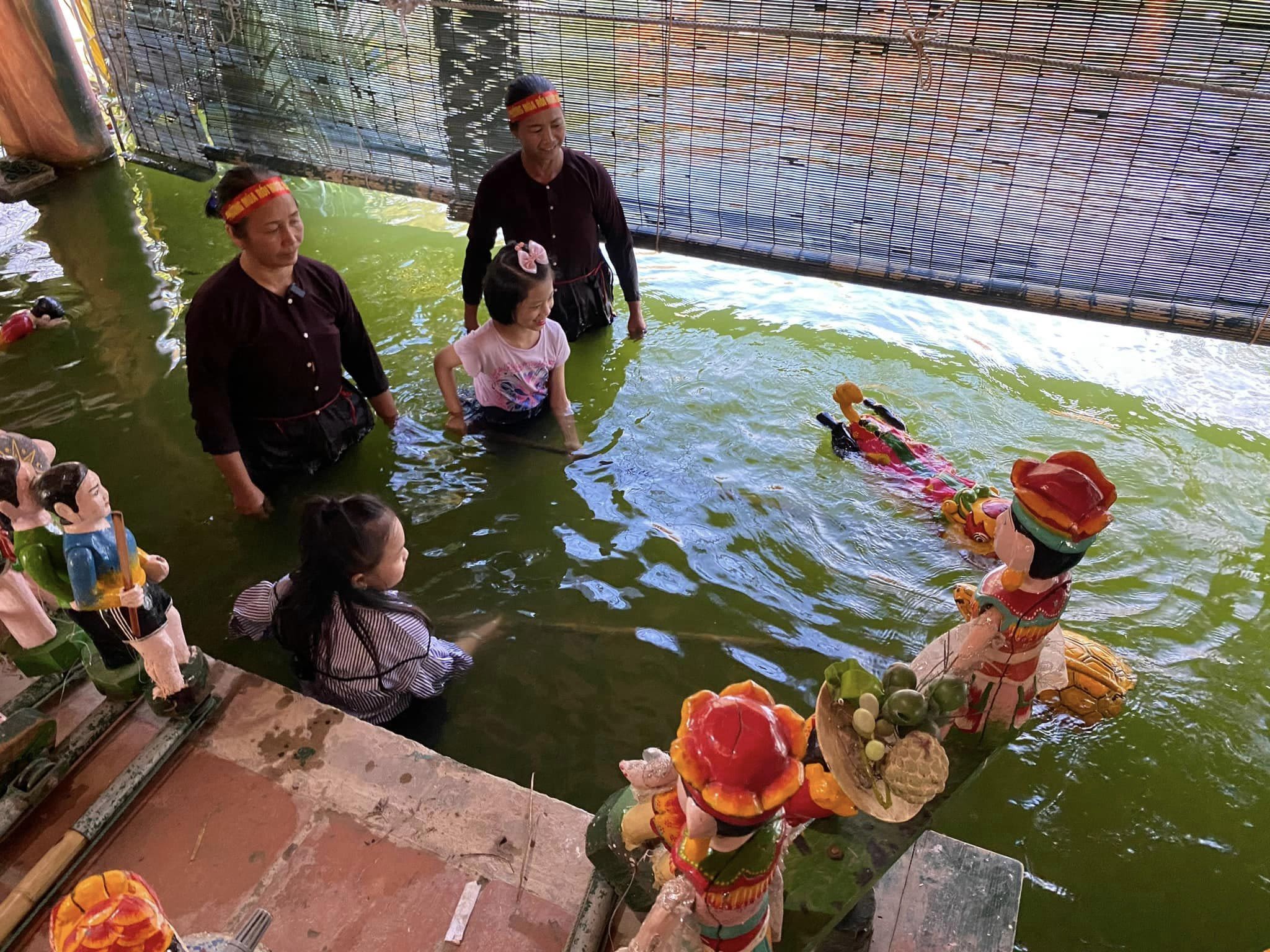

…to the revival of many forms of folk performing arts
According to statistics from the Hanoi Department of Culture and Sports, Hanoi has 1,793 intangible cultural heritages. Of which, performing arts account for a very large number. With the expansion of administrative boundaries in 2008, Hanoi has hundreds of traditional performing arts, typically: Xam, Ca Tru, water puppetry, land puppetry, Cheo Tau, Trong Quan, Trong Bong dance, and Ai Lao singing and dancing.
With unique values and a history spanning hundreds of years, even thousands of years, traditional performing arts are invaluable intangible cultural heritages carrying the "soul" of Thang Long - Hanoi culture.
Among them, many types are unique to Hanoi, such as: Drum dance in Trieu Khuc (Thanh Tri District), Ai Lao singing and dancing (Phuc Loi Ward, Long Bien District), Cheo Tau (Tan Hoi Commune, Dan Phuong District), Do singing (Liep Tuyet Commune, Quoc Oai District).
However, like most other cultural heritages, folk performing arts have a "common denominator": difficulties and being negatively affected by war. Now that the country is peaceful and unified, the folk performing arts still face the risk of fading away due to the country's many economic difficulties. It was not until the country opened its borders and the economy developed that the folk performing arts gradually revived.
Young artists of the Ca Tru Thuong Mo art troupe perform on stage. (Photo: Giang Nam)
Young artists of the Ca Tru Thuong Mo art troupe perform on stage. (Photo: Giang Nam)
This revival process is closely linked to the city's policies and guidelines. The most important of these is the City Party Committee's Programme 06 on “Developing Culture, Improving the Quality of Human Resources, Building Elegant, and Civilized Hanoians” (formerly Programme 04) which has been implemented over many terms. Preserving and promoting cultural heritage values is the top priority of Programme 06. The City assigns responsibility to the cultural sector and localities to develop specific Programmes and Plans for implementation. This is the basis for many types of folk performances to revive and develop.
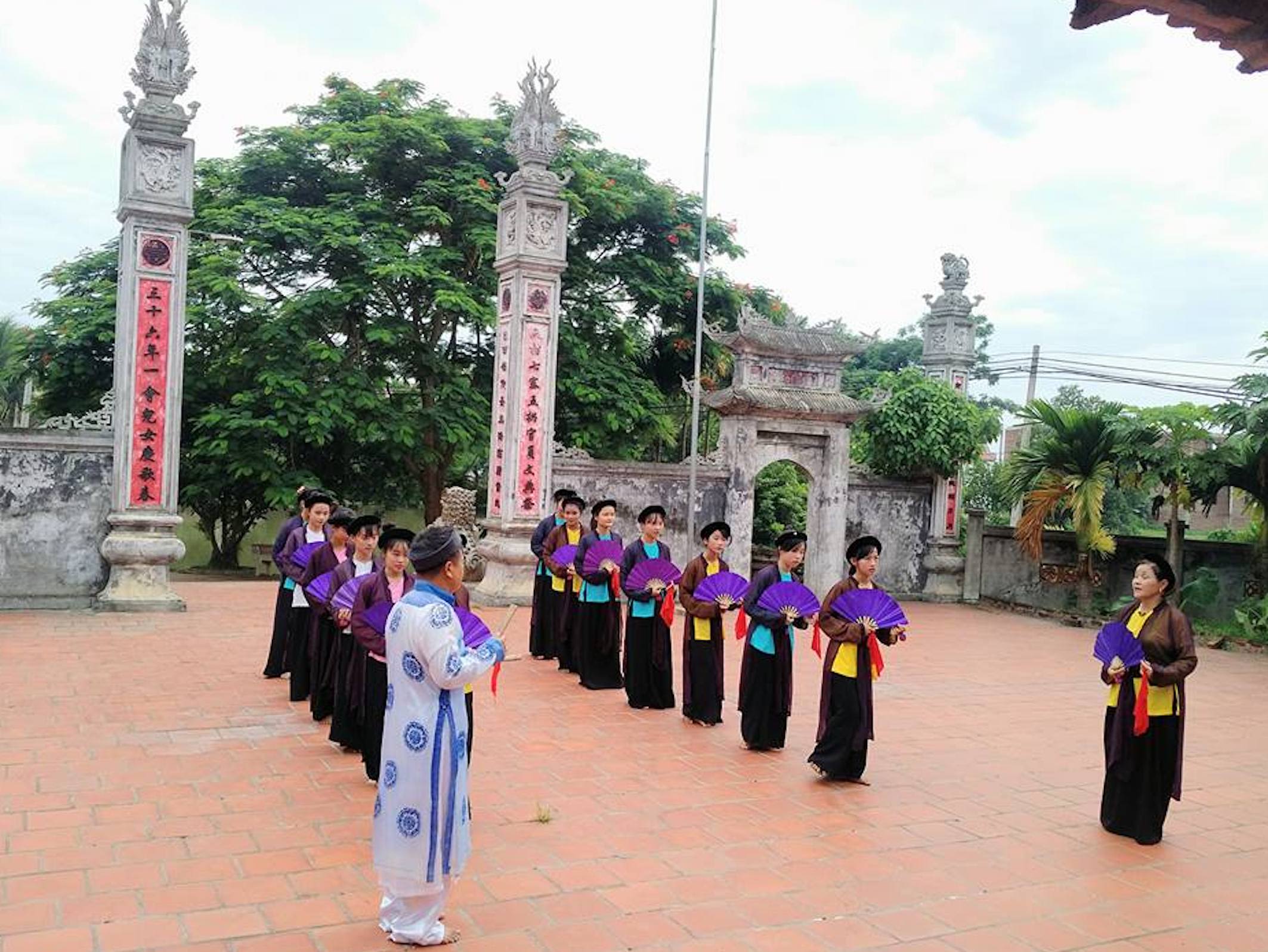
Ai Lao singing and dancing is a traditional ritual that only takes place at the Giong Festival (Phu Dong Village, Gia Lam District), performed by the people of the Ai Lao Ward (Hoi Xa Village, Gia Lam District — now Phuc Loi Ward, Long Bien District).
Legend has it that this is a song and dance that helps the mother of Saint Giong to ease her sadness after he ascended to heaven. During the Giong festival, Ai Lao Ward performs many songs: Singing when entering the temple to present offerings, singing to worship the Thuong temple, singing to worship the Mother Goddess temple, singing history, singing to carry the festival on the road, singing to bring the festival down to the field to enter the royal palace, singing to fish, singing about bamboo trees, singing to hunt tigers, singing to return to the temple after winning the battle, and so on.
Ai Lao singing and dancing was almost “disbanded” when the Giong festival was not held for many years, leaving only a few artisans who were eager to preserve the old songs.
The Ai Lao dance and singing almost “disbanded” when the Giong festival was not held for many years, leaving only a few artisans who were eager to preserve the old songs. When the Giong festival was held again, the Hoi Xa artisans gathered together, but many of the songs had fallen away over time because they were mainly passed down orally.
Faced with this reality, the Hanoi Department of Culture and Sports and the Vietnam Folk Arts Association coordinated with artisans to collect the songs and dances. After gathering a relatively complete collection, the songs and dances were given back to the local people. Another major change that has been implemented is that in the past, the Ai Lao dance and singing were performed only during the Giong festival, but now, they are performed in the Hoi Xa Village festival. This activity helps people to be more connected and understand the heritage of their homeland.
Similar stories also happen with many other types of folk heritage. The enthusiasm of the artisans combined with the city's support policies help revive folk performances. These are the Chinese rowing tunes in Dan Phuong, the singing of Do in Quoc Oai, the "chat, tom" sounds in the Ca Tru guilds in Hoai Duc, Dong Anh...
A folk dance in Trieu Khuc. (Photo: Giang Nam)
A folk dance in Trieu Khuc. (Photo: Giang Nam)
Trong Quan singing was once on the verge of being forgotten, but it has seen a strong revival in districts Phuc Tho and Thuong Tin. Le Van Ba, Vice Chairman of the Khanh Ha Communal People's Committee (Thuong Tin District) and Head of the Trong Quan Singing Club of Khanh Ha Commune, shared that thanks to the early involvement and attention of the city authorities, Trong Quan singing in Khanh Ha Commune has been “revived” with over 300 ancient songs in various melodies being preserved and passed down, while the number of practitioners is steadily increasing. Khanh Ha Commune now has 4 artists who have been honoured with the title of "Meritorious Artisan".
The city has also organised numerous cultural and artistic programmes, along with major festivals, to introduce different forms of folk performance to the public. Notable examples include the Creative Design Festival, the Hanoi Tourism Festival, and the Hanoi Autumn Festival.
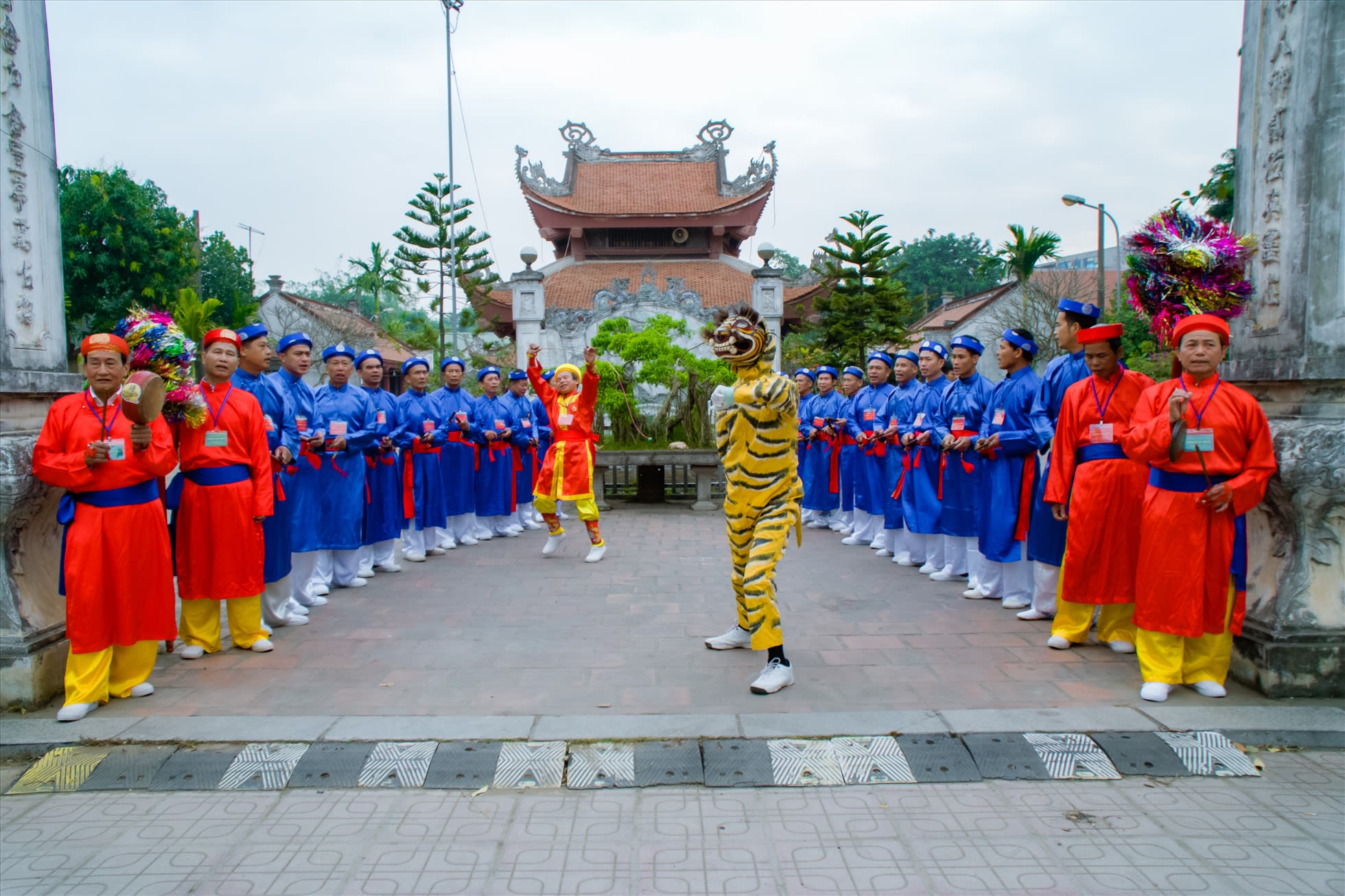
Towards preservation and sustainable development
In recent years, the city has seen an increasing number of folk performances serving the public.
In the pedestrian areas around Hoan Kiem Lake and Hanoi's Old Quarter, there are programmes such as "Stories of Old Quarter Music" (at the Old Quarter Cultural Exchange Centre, 50 Dao Duy Tu Street), as well as outdoor stages featuring Xam singing (ballads sung by wandering blind musicians) and various forms of folk arts.
Notably, the live performance Tinh hoa Bac Bo (The Quintessence of the Tonkin) at the Tuan Chau Tourist Area in Quoc Oai District, which combines daily life activities with different art forms, is a remarkable effort to elevate folk performance arts in the city. In addition, performances by artists from Xam Ha Thanh Group and the Thang Long, Thai Ha and Lo Khe Ca Tru (ceremonial singing) guilds have been also held.
The live performance of Tinh hoa Bac Bo recreates and honours the beauty of rural life. (Photo: Tuan Chau Hanoi Joint Stock Company)
The live performance of Tinh hoa Bac Bo recreates and honours the beauty of rural life. (Photo: Tuan Chau Hanoi Joint Stock Company)
This signals the revival of Hanoi's folk performance arts and the initial success in implementing Resolution No.09-NQ/TU on the development of the cultural industry in the capital for the 2021-2025 period, with orientation towards 2030 and a vision to 2045, set by the Hanoi Party Committee.
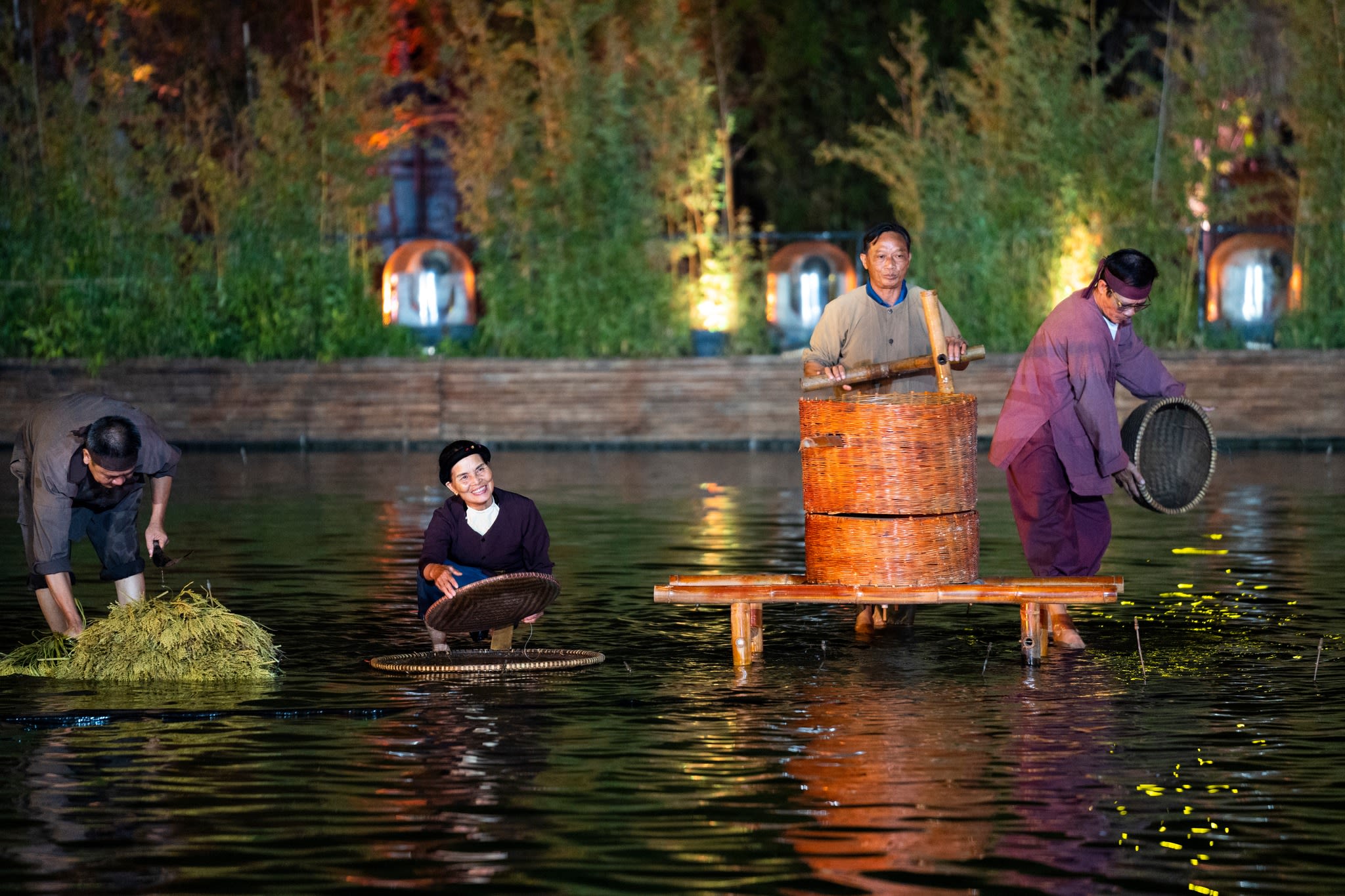
It is essential to recognise that preservation is the foundation before we can exploit and promote its value
Dr. Nguyen Thu Thuy, lecturer at the Faculty of Interdisciplinary Sciences - Vietnam National University, Hanoi, affirmed that in order to bring traditional performing arts closer to tourists, organising units need to strengthen their connection with tourism. For example, the Hanoi Hop On Hop Off tour can combine with a tour to visit the ancient village of Duong Lam and watch the Tinh Hoa Bac Bo (The quintessence of Tonkin) live performance in one day. Hanoi currently has a total of 15 night tours, and if collaboration is strengthened, tourists will have more opportunities to experience traditional performing arts, integrating these art forms into the tour services.
However, the city determines that preservation is still the priority before exploitation and promotion of these values. To support artisans comprehensively, the Hanoi People’s Council issued Resolution No.23/2022/NQ-HDND in 2022 on regulations on treatment and support for People’s Artists, Meritorious Artists, artisans, and prominent clubs in the field of intangible cultural heritage. The resolution has been quickly implemented by sectors and localities and has initially encouraged artisans to preserve heritage.
The ‘Chuyen nhac pho co’ (Old Quarter Music Story) programme brings together many famous artists in the field of traditional music. (Photo: The Hanoi Old Quarter Management Board)
The ‘Chuyen nhac pho co’ (Old Quarter Music Story) programme brings together many famous artists in the field of traditional music. (Photo: The Hanoi Old Quarter Management Board)
Bui Thi Huong Thuy, Deputy Head of the Heritage Management Office (Hanoi Department of Culture and Sports), said: “Prominent clubs are given an initial grant of 50 million VND for the purchase of equipment upon establishment, and an annual operating budget of 20 million VND. The city also provides support for artisans and successors who participate in practicing, performing, teaching, protecting, and promoting heritage values. Instead of teaching solely for love as before, artisans now receive financial support for their teaching sessions. These are favourable conditions for artisans and intangible cultural heritage clubs to effectively promote their role in preserving and enhancing the value of heritage.”
